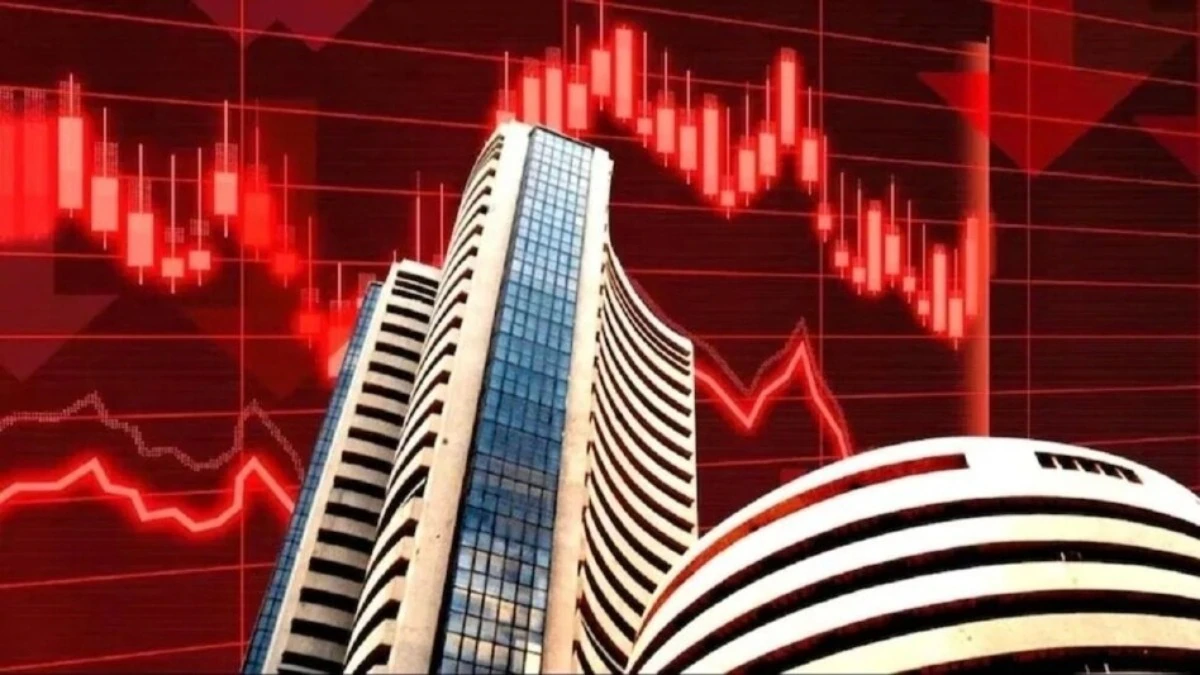Here’s a more detailed look at the current market scenario:
Market Overview
Indian benchmark indices opened in the red today. The S&P BSE Sensex is reported to be down over 300 points—trading around the 75,600 level—while the NSE’s Nifty 50 is holding below 22,900. This decline is largely attributed to investor caution amid renewed concerns over US tariff proposals targeting key sectors such as automobiles, pharmaceuticals, and semiconductors. Such measures, if implemented, could increase costs and disrupt supply chains for India’s export-oriented industries.
Sectoral Impact
Several major stocks are acting as drag factors:
Automobile and Auto Ancillaries:
- Companies like Mahindra & Mahindra and Maruti Suzuki are experiencing noticeable declines, reflecting fears that higher tariffs may dampen demand.
Banking and Financials:
- HDFC Bank and other financial stocks are also under pressure, further contributing to the overall market drop.
Pharmaceuticals:
- With India being a key global supplier, pharma stocks are particularly sensitive to the potential impact of US tariffs.
Even though a few sectors (like metals) are showing resilience with slight gains, the majority of the 30-stock Sensex index is trading lower. citeturn0search4
Global and Domestic Drivers
Investor sentiment is being influenced by a mix of global and domestic factors:
US Tariff Uncertainty:
- President Trump’s announcement of possible 25% tariffs on targeted sectors has heightened fears of a trade war, adding to global volatility.
Foreign Investor Activity:
- Reports indicate a continuation of foreign sell-offs in Indian equities, which compounds the pressure on the indices.
Earnings and Valuations:
- Domestic concerns—such as two consecutive quarters of lackluster corporate earnings and high valuations relative to growth prospects—are also weighing on market confidence.
Analysts suggest that until there’s clearer guidance on tariff policies and a turnaround in corporate earnings, the market could remain cautious.
International Exposure via ETFs
For investors looking at international exposure, several India-focused ETFs trading on U.S. markets are showing relatively modest movements compared to domestic volatility:
- iShares MSCI India ETF (INDA): ~49.76 USD
- WisdomTree India Earnings Fund (EPI): ~42.1 USD
- Invesco India ETF (PIN): ~24.12 USD
- iShares India 50 ETF (INDY): ~49.06 USD
- iShares MSCI India Small-Cap ETF (SMIN): ~64.9 USD
These figures indicate that while the Indian market is experiencing significant intraday fluctuations, the ETFs tracking Indian equities internationally have remained relatively stable.
Outlook
Market strategists are advising a stock-specific approach—targeting resilient companies and sectors that can weather the volatility. There is cautious optimism that if US tariff concerns ease and domestic earnings show signs of recovery (with some expecting an uptick in FY26), the indices might stabilize. For now, investors are advised to closely monitor both global trade developments and domestic corporate performance.
Overall, today’s downturn reflects a convergence of global trade uncertainty and domestic economic pressures, with market participants bracing for further volatility until more clarity emerges.
FOLLOW:https://newsroom47.com/gold-rates-today-in-india-22k-and-24k-prices-for-your-city/
Newsroom 47
